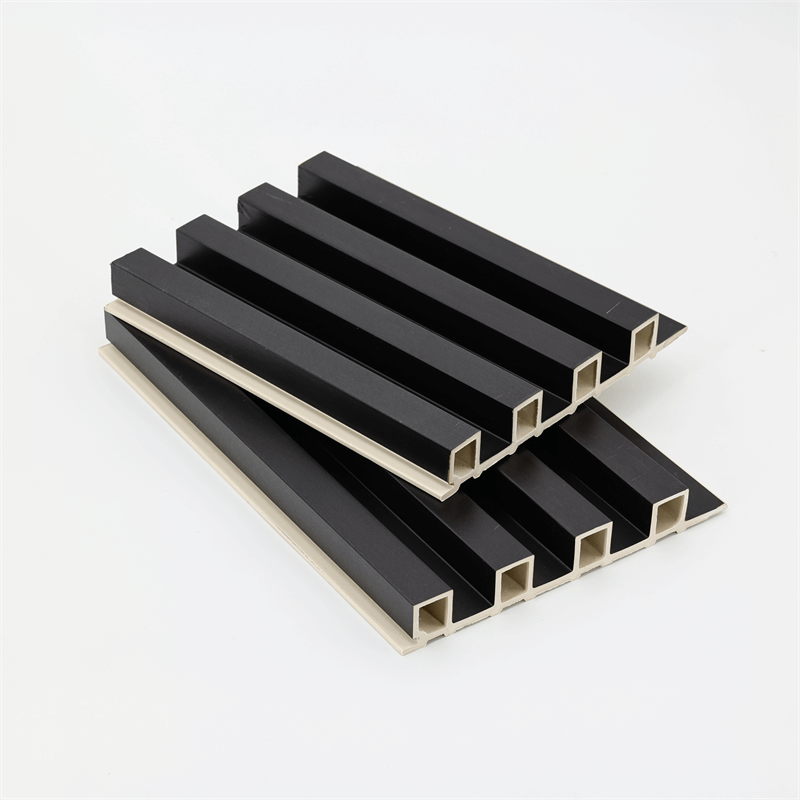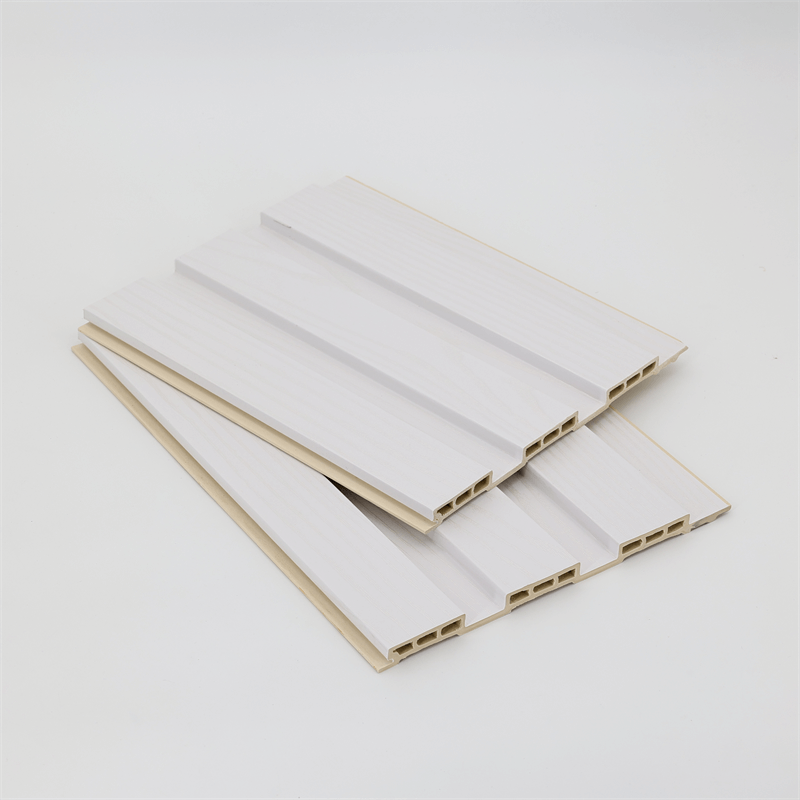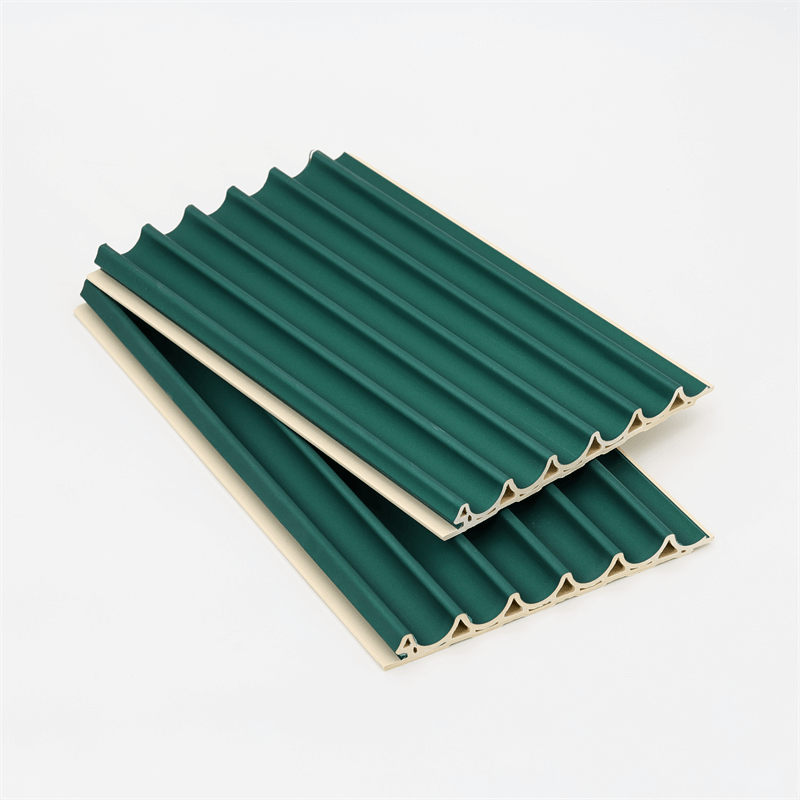In the field of interior design and construction, the choice of wall materials plays a significant role in determining the overall aesthetics, functionality, and durability of a space.
Traditional wall materials such as wood, plaster, and ceramic tiles have been widely used, but they often come with their own set of challenges.
This essay explores how WPC (Wood-Plastic Composite) wall panels have emerged as a solution to overcome these challenges.
We will discuss the advantages of WPC wall panels in terms of durability, moisture resistance, ease of installation, and design versatility.
I. Durability:
- Strength and Longevity: One of the primary challenges faced by traditional wall materials is their susceptibility to wear and tear over time. WPC wall panels are engineered to be highly durable, offering superior strength and resistance to impact and scratching. The combination of wood fibers and thermoplastic polymers provides a sturdy structure that can withstand the rigors of daily use.
- Weather Resistance: Traditional wall materials often suffer from damage due to exposure to moisture, extreme temperatures, and UV radiation. In contrast, WPC wall panels are designed to resist these environmental factors. They are moisture-resistant, preventing issues such as rotting, swelling, or warping. Additionally, they have excellent UV stability, ensuring that their color and finish remain vibrant and intact even under prolonged exposure to sunlight.
II. Moisture Resistance:
- Prevention of Water Damage: Moisture can be a significant concern in areas such as bathrooms, kitchens, and basements. Traditional wall materials like wood and plaster can absorb water, leading to deterioration and the growth of mold and mildew. WPC wall panels, on the other hand, have inherent moisture resistance properties, making them an ideal choice for moisture-prone areas. They do not absorb water, preventing damage and maintaining a clean and hygienic environment.
- Easy Maintenance: The moisture resistance of WPC wall panels also contributes to their ease of maintenance. Unlike traditional materials that may require frequent sealing, painting, or replacement, WPC panels can be easily cleaned with mild soap and water. This not only saves time and effort but also ensures that the panels retain their original appearance and performance over an extended period.
III. Ease of Installation:
- Quick and Efficient: Installing traditional wall materials can be a time-consuming and labor-intensive process. WPC wall panels, however, offer a convenient and efficient installation method. They are typically designed with interlocking systems or tongue-and-groove connections, allowing for straightforward and secure installation. This reduces the need for specialized skills and significantly shortens the installation time.
- Versatile Installation Options: WPC wall panels provide versatility in terms of installation options. They can be installed directly onto existing walls, eliminating the need for extensive preparatory work. Additionally, they can be easily cut and customized to fit specific dimensions and design requirements. This flexibility enables designers and builders to create unique and personalized wall configurations, adding a touch of creativity to the space.
IV. Design Versatility:
- Aesthetics and Texture: Traditional wall materials may have limitations in terms of design options and textures. WPC wall panels offer a wide range of design choices, including various finishes, colors, and textures. They can mimic the appearance of natural materials like wood or stone, providing a visually appealing and realistic aesthetic. Whether aiming for a rustic look or a modern, sleek design, WPC wall panels can cater to diverse design preferences.
- Integration with Other Materials: Another advantage of WPC wall panels is their compatibility with other materials. They can be combined with elements such as glass, metal, or decorative accents to create striking visual contrasts and unique design statements. This versatility allows for seamless integration into different interior styles and architectural concepts.
WPC wall panels have emerged as a game-changer in the realm of wall materials, addressing and overcoming the challenges posed by traditional options.
Their durability, moisture resistance, ease of installation, and design versatility make them a preferred choice for modern interior design and construction projects.
By opting for WPC wall panels, designers and builders can create spaces that are not only visually stunning but also long-lasting, low maintenance, and resistant to environmental factors.
The versatility and performance of WPC wall panels open up endless possibilities for creating functional, aesthetically pleasing, and sustainable interior environments.

In conclusion, WPC wall panels offer a comprehensive solution to the challenges faced by traditional wall materials.
Their durability, moisture resistance, ease of installation, and design versatility make them an ideal choice for modern interior design and construction projects.
By choosing WPC wall panels, designers and builders can overcome the limitations of traditional materials, ensuring long-lasting, low-maintenance, and visually appealing spaces.
The strength and longevity of WPC panels provide peace of mind, as they can withstand daily wear and tear without compromising their structural integrity.
Their resistance to moisture and weathering ensures that they remain in pristine condition even in moisture-prone areas.
The ease of installation of WPC wall panels saves time and effort during the construction process.
With their interlocking systems and customizable dimensions, these panels offer flexibility in design, allowing for unique and personalized configurations.
Their wide range of finishes, colors, and textures enables designers to achieve various aesthetics, seamlessly integrating with other materials and design elements.
Moreover, WPC wall panels contribute to sustainable design practices.
Made from a combination of wood fibers and thermoplastic polymers, they reduce the reliance on natural resources while providing an alternative to traditional materials that may contribute to deforestation or environmental degradation.
As the demand for eco-friendly, durable, and visually appealing interior solutions grows, WPC wall panels continue to gain popularity.
Their ability to overcome the challenges posed by traditional wall materials makes them a valuable asset in the construction industry.
By embracing WPC wall panels, designers and builders can create spaces that are not only aesthetically pleasing but also functional, sustainable, and resistant to the demands of modern living.
In summary, WPC wall panels offer a cost-effective and practical solution for transforming interior spaces.
Their exceptional durability, moisture resistance, ease of installation, and design versatility make them a preferred choice for both residential and commercial projects.
By utilizing WPC wall panels, designers and builders can achieve stunning results while overcoming the limitations of traditional wall materials.
With their many benefits, WPC wall panels are revolutionizing the way we approach interior design, enabling us to create beautiful, sustainable, and resilient spaces for generations to come.


